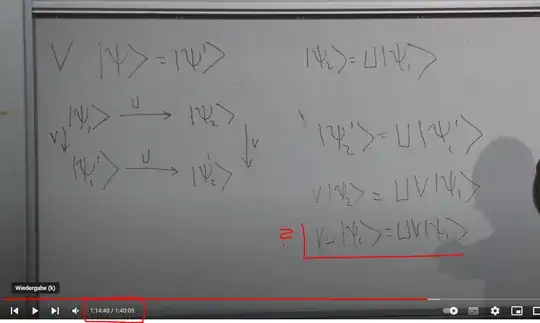Note:
This question is the same as mine.
After having studied physics decades ago I recently reviewed some basics of symmetry in quantum physics. As a more experimental physicist I never understood deeply, what symmetries have to do with the Hamiltonian operator $H$.
For instance it is always stated, that $H$ is the generator of time evolution, so (I put it down simplified and also set $\hbar=1$)
$$| \psi(t+dt)\rangle = (1- iHdt)\, | \psi(t)\rangle $$
Similarly, $$\psi(x+dx)= \psi(x) + dx \cdot \frac{\partial }{\partial x} \psi(t) = (1- i p \cdot dx) \, \psi(t)$$
with $p$ as the momentum operator.
Why is there a symmetry, when $$[p, H]=0.$$
What has time evolution to do with a shift along the $x$-axis? And what is this symmetry about? I know, that $p$ is a conserved quantity in this case, but how is this derived from the first principles above?
To clarify my question a bit more:
I viewed Susskind's advanced QM lectures and cannot follow his physical arguments in the middle of the video. Unfortunately exactly at this time the video is interrupted and something is missing. He introduced the time evolution operator H and the x-shift operator V and by some "magic" he came to the conclusion, that under a "symmetry" they must commute (see image). My question is from what reasoning this was derived and what symmetry means here in particular?
